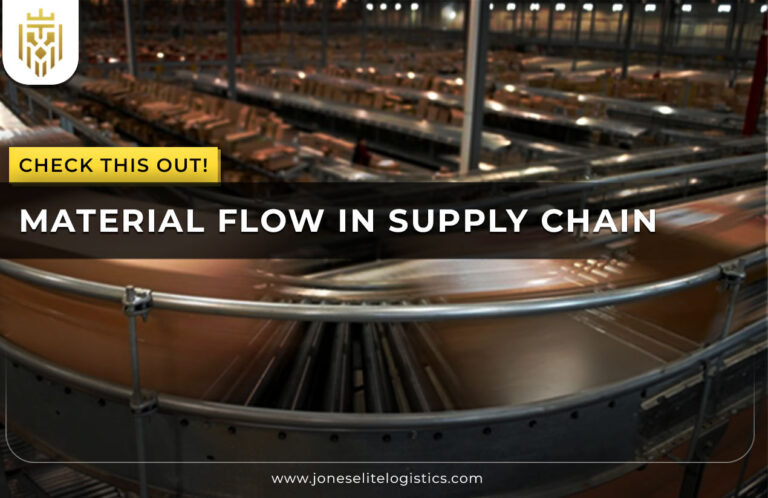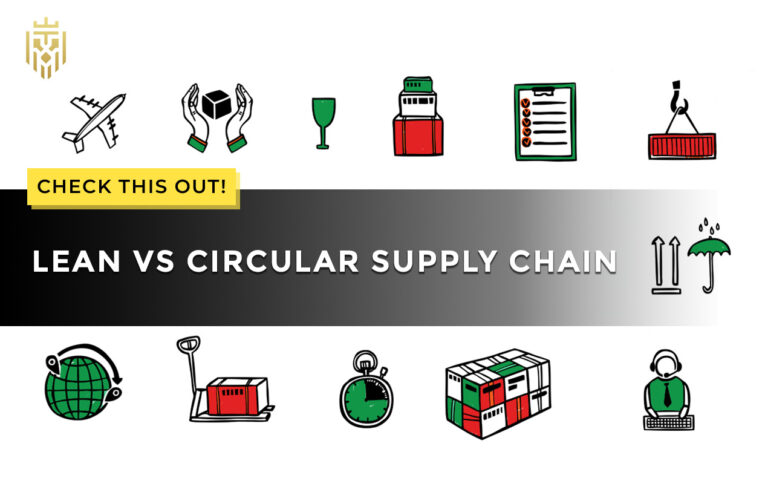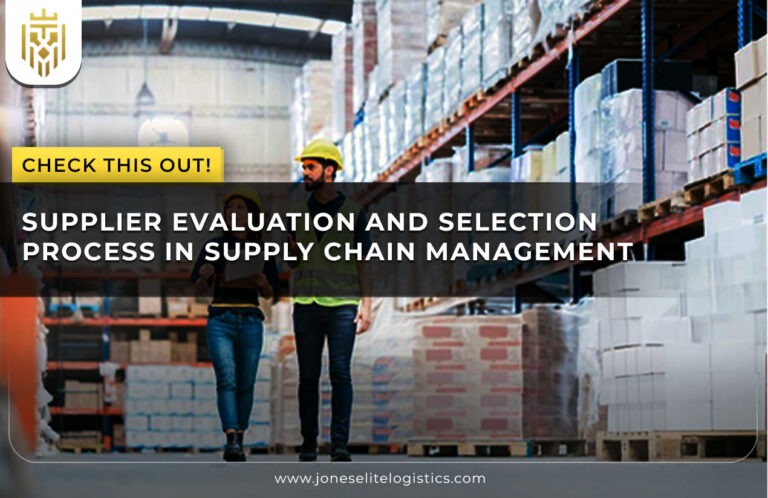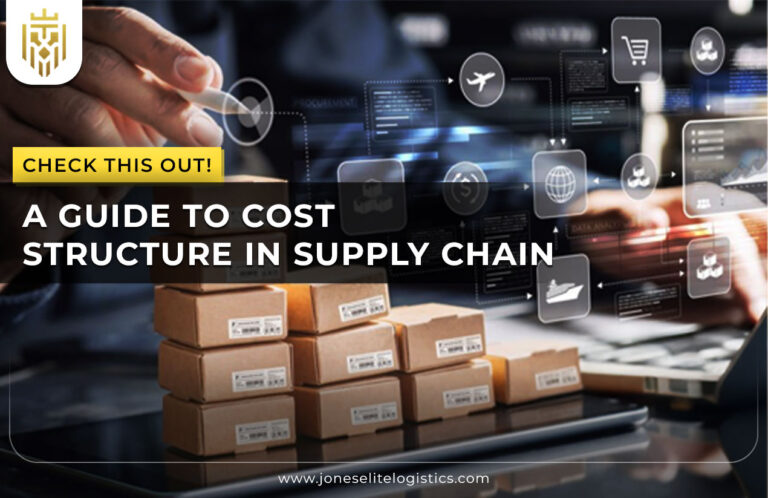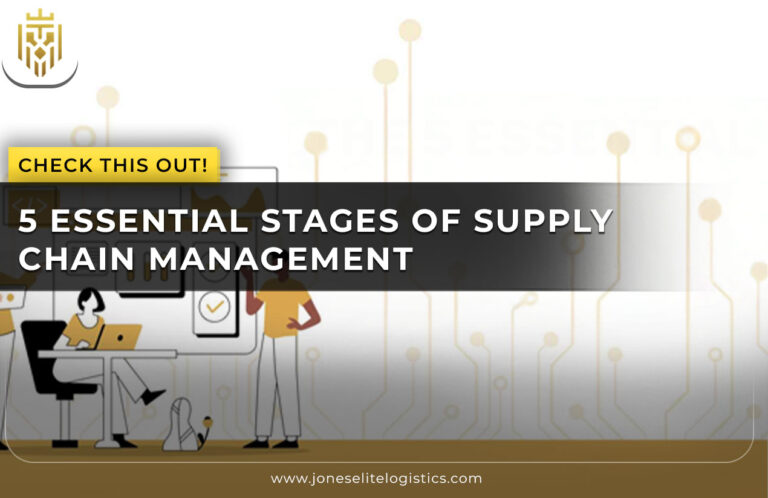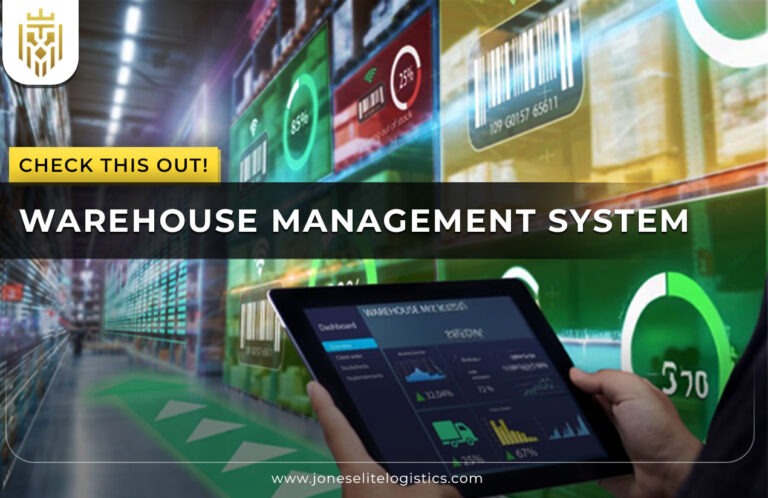What is the Perpetual Inventory System?
When reading about what is perpetual inventory system, one can see that it utilises computerised tools to track finished goods inventory and raw materials in real time. By continuously updating inventory records with every purchase, sale, or manufacturing order, it minimises inventory shrinkage, enhances vendor managed inventory, and supports just-in-time inventory management, ensuring accurate and efficient inventory management. The system also improves visibility into inventory movement and helps maintain better control over inventory data.
How does a Perpetual Inventory System work?
A Perpetual Inventory System involves software that tracks inventory changes in real-time using barcodes or RFID. With automated transaction updates and data-driven reorder points, it minimises inventory shrinkage. Detailed reporting enables effective FSN Analysis in inventory management, ensuring businesses can streamline operations while integrating ABC Analysis in inventory management for better inventory control and management efficiency.
What is the difference between a Perpetual and Periodic Inventory System?
The Perpetual Inventory System meaning highlights its real-time updates using automated tools, ideal for managing finished goods inventory and other large inventories. In contrast, periodic inventory systems update records manually at set intervals, suitable for simpler setups. The perpetual inventory system improves accuracy, integrates with just in time inventory management, and reduces errors compared to periodic systems, which rely on physical inventory counts done periodically to reconcile inventory levels.

Who uses a Perpetual Inventory System?
A Perpetual Inventory System is often seen in businesses with large inventories, such as e-commerce retailers or distributors, who benefit from real-time tracking and inventory count. Companies specializing in vendor managed inventory, FSN analysis in inventory management, or high-value products use it to manage finished goods inventory, reduce inventory shrinkage, increase inventory value, and enhance efficiency across diverse or complex inventory structures.
-
When would you use a Perpetual Inventory System?
Businesses with high inventory volumes, multiple locations, or rapid growth benefit from this system. It’s essential for vendor managed inventory, ABC analysis in inventory management, or just in time inventory management, providing real-time data via inventory accounting to optimize operations, track finished goods inventory, and prevent inventory shrinkage effectively.
Types of Perpetual Inventory System
A Perpetual Inventory System involves two methods: FIFO and LIFO – to value stock. The approaches described in this article help businesses perform FSN Analysis in Inventory Management and elaborate on the records of Finished Goods Inventory. FIFO and LIFO also connects with just in time inventory management and calculates the right valuation of the inventory, thus ensuring low inventory shrinkage during peak demand cycles.

-
FIFO
In a Perpetual Inventory System, FIFO (First-In, First-Out) method prioritises selling older inventory first, reducing spoilage and ensuring accuracy for ABC analysis in inventory management. Used to track finished goods inventory, vendor managed inventory and maintains ledger consistency, it is a must have tool for businesses that need precision in stock and cost tracking.
-
LIFO
In the context of what is Perpetual Inventory Systems, the LIFO (Last-In-First-Out) method is great for inflation to keep taxable income in check. It supports FSN analysis in perpetual inventory management, finished goods inventory tracking, and inventory shrinkage reduction while helping businesses that focus on modern inventory cost alignment with sales revenue.
Features of the Perpetual Inventory Method
The perpetual inventory method offers real-time tracking, automated stock updates, integration with POS and ERP systems, reorder alerts, and detailed reports, enhancing accuracy, inventory control, and decision-making without relying solely on physical stock counts.
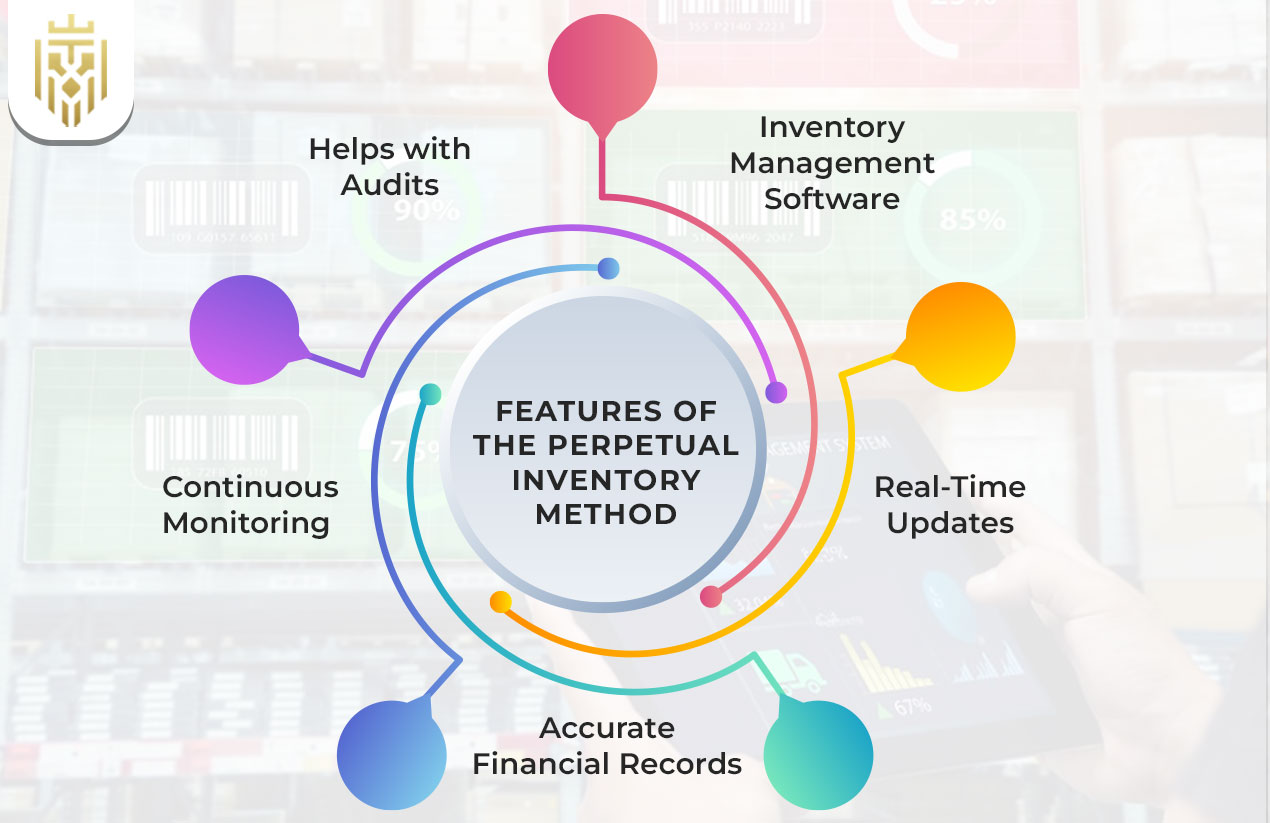
-
Inventory Management Software
A perpetual inventory system relies on software that tracks inventory in real-time, automatically updating stock levels after sales or purchases. It includes features like automated stock adjustments, reorder alerts, POS and ERP integration, and comprehensive inventory reporting for efficient perpetual inventory management.
-
Real-Time Updates
The Perpetual Inventory Method ensures real-time updates with every sale, purchase, or return. It provides immediate inventory visibility, improving accuracy and minimizing stock discrepancies. This continuous tracking system eliminates the delay between transactions and inventory updates found in periodic inventory systems.
-
Accurate Financial Records
With continuous tracking of transactions, the Perpetual Inventory Method helps businesses maintain accurate financial records and an inventory count. It ensures real-time updates on inventory levels and cost of goods sold, supporting better forecasting, decision-making, and inventory control for improved operational efficiency.
-
Continuous Monitoring
The Perpetual Inventory Method enables constant monitoring of stock levels by updating records after each transaction. Unlike periodic systems, it provides uninterrupted inventory visibility, helping businesses promptly respond to stock shortages, replenishment needs, and demand changes without relying solely on physical counts.
-
Helps with Audits
Real-time updates and detailed transaction tracking in a perpetual inventory system streamline the auditing process. It minimises inventory discrepancies, simplifies financial reconciliation, and creates a digital paper trail that auditors can easily review to verify inventory accuracy and compliance.
Perpetual Inventory Formulas
Perpetual Inventory System formulas like COGS, EOQ, and Gross Profit Margin calculate inventory costs, optimal order quantities, and profitability. They enable businesses to maintain precise stock levels and assess financial performance effectively.

-
COGS
The Cost of Goods Sold (COGS) formula in a perpetual inventory system calculates inventory flow efficiently:
COGS = Beginning Inventory + Purchases – Ending Inventory.
This formula integrates with ABC analysis in inventory management, ensuring accurate cost tracking for finished goods inventory, reducing inventory shrinkage, and improving profitability analysis.
-
EOQ
Economic Order Quantity (EOQ) minimises ordering and holding costs in a perpetual inventory system. EOQ = √((2 × Demand × Ordering Cost) / Holding Cost). It complements just in time inventory management by maintaining stock at optimal levels, improving cash flow and enabling precise vendor managed inventory decisions for finished goods inventory.
-
Gross Profit Margin
Gross Profit = Revenue – COGS.
The Perpetual Inventory System ensures accurate gross profit tracking by real-time updates in finished goods inventory. It reduces inventory shrinkage, integrates with ABC analysis in inventory management, and provides businesses with insights into production efficiency and financial health.
Role of Automation in Perpetual Inventory System
Automation improves perpetual inventory systems by automatically recording inventory changes and updating stock data in real-time. This minimises manual errors, enhances accuracy, and improves overall inventory control, helping businesses operate more efficiently and make informed inventory-related decisions.
Advantages Of Perpetual Inventory System
The Perpetual Inventory System offers real-time data, reduced Inventory Shrinkage, cost savings, enhanced accuracy, detailed tracking, and seamless integration with methods like Vendor Managed Inventory and ABC Analysis in Inventory Management, improving efficiency and decision-making.

-
Records Data in Real Time
Finished goods inventory in a perpetual inventory system does real time updates which helps in maintaining accurate records and reducing inventory shrinkage. FSN analysis for inventory management and vendor managed inventory also supported by it, that allows businesses to forecast demand, avoid stockouts and optimize operations for better profitability and efficiency. In addition, this system allows identifying and eliminating inventory flow inefficiencies for better operational outcomes.
-
Reduces Inventory Cost
The Perpetual Inventory System focuses on reducing costs by providing precise stock data. Businesses can avoid overstocking or under-stocking, free capital and minimize unnecessary storage or operational expenses with integration into ABC analysis in inventory management and just in time inventory management. It also assists businesses to deploy limited resources more strategically to achieve greater financial and operational efficiency.
-
Provides a Detailed Paper Trail
The Perpetual Inventory System stores all inventory movements in a comprehensive way for FSN analysis in inventory management and inventory shrinkage detection. This paper trail allows for audits, to optimize finished goods inventory and to increase transparency in supply chain operations. Moreover, it also ensures compliance with industry regulations and internal policies, enhancing accountability and reliability of inventory management.
-
Calculates End of Year Inventory Balance
A Perpetual Inventory System makes year-end inventory calculations much simpler with continuous updates. This helps vendor managed inventory, ABC analysis in inventory management, and finished goods inventory management to have accurate financial reporting, reduce inventory shrinkage and give actionable insights for strategic planning. Beyond that, it provides companies with a way to make data-driven decisions regarding inventory forecasting and budget alignment.
Challenges of Perpetual Inventory System
Challenges include high initial setup costs, complex implementation, regular maintenance, data inaccuracies from scanning errors or malfunctions, and the need for staff training and cybersecurity, making it potentially difficult for small businesses to adopt effectively.
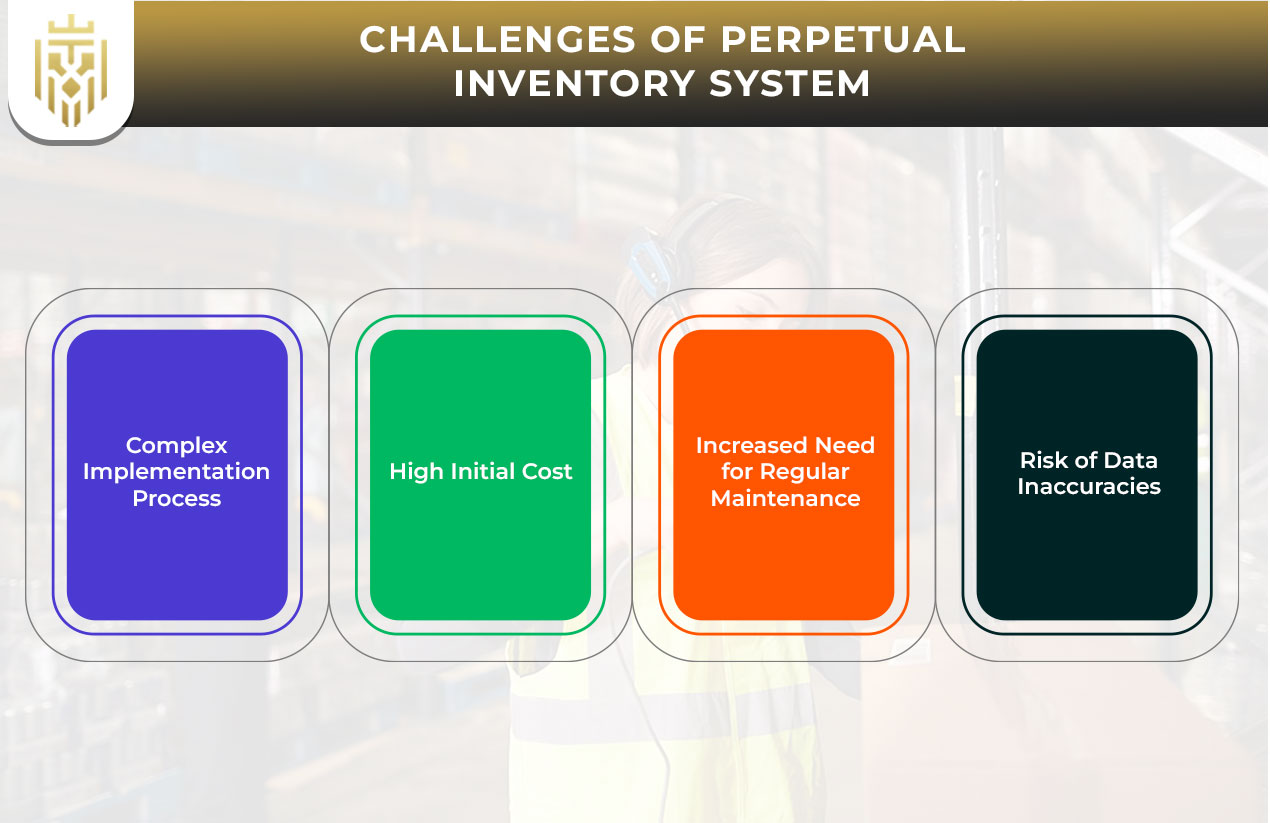
-
Complex Implementation Process
Implementing a perpetual inventory system involves significant complexity and cost. Businesses must invest in specialized software, compatible hardware, and employee training. Challenges also include managing system errors, ensuring data security, and conducting ongoing maintenance to keep the system accurate and reliable for consistent inventory accuracy.
-
High Initial Cost
One major drawback of perpetual inventory systems is their high setup cost. Businesses must invest in advanced inventory software, devices like barcode or RFID scanners, and training programs, which can be prohibitively expensive for small enterprises with constrained budgets, especially when integrating a perpetual inventory method.
-
Increased Need for Regular Maintenance
Perpetual inventory systems require consistent maintenance to ensure accuracy. This includes software updates, hardware servicing, and calibration of scanning tools. Without regular upkeep, errors can accumulate, reducing the system’s effectiveness and potentially leading to flawed inventory records.
-
Risk of Data Inaccuracies
Despite real-time tracking, perpetual inventory systems are prone to errors from incorrect scans, software bugs, or human mistakes. These inaccuracies can create mismatches between actual and recorded stock levels, leading to operational disruptions, overstocking, or stockouts that hurt the supply chain flow.
FAQs
1. What is Perpetual Inventory System?
Perpetual Inventory System is a system that tracks inventory in real time as every transaction takes place, updating stock levels and values. It gives accurate data for better management and the tools such as RFID and Just in Time Inventory Management.
2. What is the difference between a Perpetual and Periodic Inventory System?
A Perpetual Inventory System updates inventory records in real time, which is accurate and integrated, while a Periodic Inventory System updates records based on intervals, which are cost efficient, but requires manual counts for stock and COGS adjustments.
3. What are the Types of Perpetual Inventory System?
FIFO and LIFO methods are used in Perpetual Inventory systems to value inventory. FIFO prioritises older stock sales and LIFO prioritises recent purchases sales when transactions or financial periods occur, affecting COGS calculations and inventory valuation differently.
4. What are the Advantages of Perpetual Inventory System?
Real time tracking, lowering inventory shrinkage, automatic reorder points, improved forecasting, lowered costs, and detailed audit trails are all advantages. These systems also provide finished goods inventory management and integration with FSN analysis in inventory management based tools.

